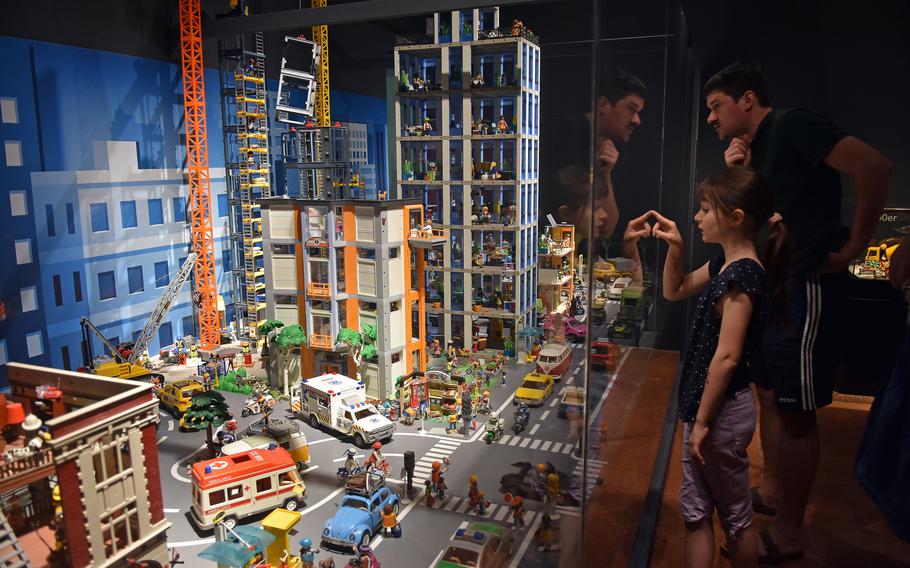
A Playmobil city with various buildings and busy streets is part of the “We Love Playmobil” 50th anniversary exhibition at the Historical Museum of the Pfalz in Speyer, Germany. Visitors can catch the exhibition through Sept. 15. (Jennifer H. Svan/Stars and Stripes)
For people who think Legos are way cooler than German rival Playmobil, a temporary exhibition at the Historical Museum of the Pfalz in Speyer may change their mind.
A variety of elaborate, three-dimensional Playmobil worlds, from the whimsical to the educational, make up the museum’s “We Love Playmobil” exhibition, an ode to the German line of plastic toys that has captured children’s imaginations for 50 years.
My teenage son, who has boxes of assorted Legos, told me Playmobil is for “little kids” and at first scoffed at a museum visit. Our only Playmobil set, long gone, was an aquarium that came with a dolphin and tiny fish to “feed” the dolphin.
Unlike Lego bricks, which are for builders, Playmobil comes mostly preassembled and ready to use, with an emphasis on imagination and role-playing.
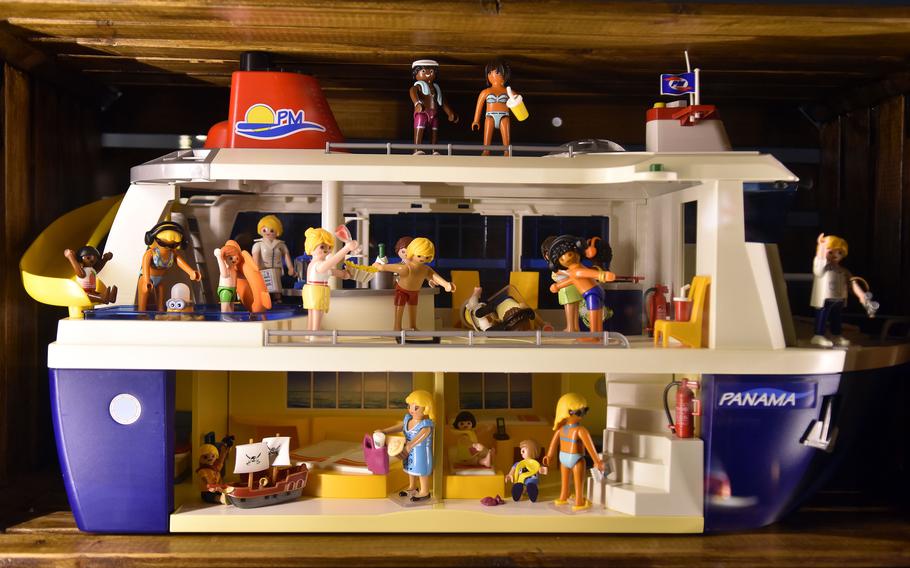
A Playmobil cruise ship with bathing-suit-clad figures is among various types of toy water vessels featured in the “We Love Playmobil” exhibition at the Historical Museum of the Pfalz in Speyer, Germany, celebrating the 50th anniversary of the German toy. (Jennifer H. Svan/Stars and Stripes)
Those themes are on display across more than a half-dozen rooms that are part of the museum’s exhibition, which even impressed my son.
The dioramas are complex, with hundreds of pieces and figures from Playmobil collections through the years. Some depict historical scenes, such as a settlement from ancient Rome, complete with a fort with watch towers and a colosseum.
Elsewhere, pharaohs and pyramids populate an ancient Egypt set, while samurai mill about a feudal Japan display. Other sets are more interactive, such as one called “space western,” which shows aliens on a desert landscape with moving constellations choreographed to music.
Some of my favorites included the “vampire’s ball,” with costumed characters and an imposing castle, and a traveling circus with animals and a big top.
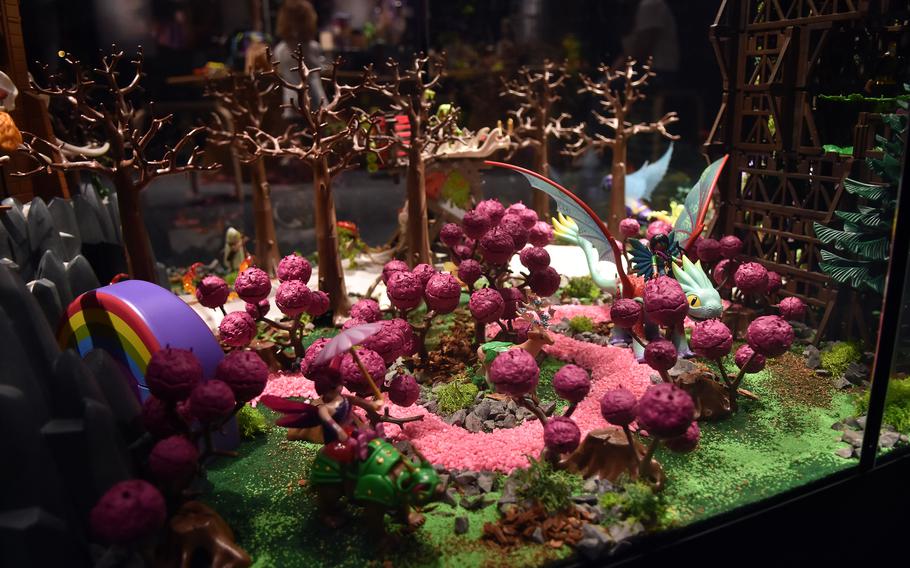
Adventures of Ayuma is among the intricate Playmobil dioramas on display through Sept. 15 at the Historical Museum of the Pfalz in Speyer, Germany. “We Love Playmobil” is an exhibition celebrating the 50th anniversary of the German toy. (Jennifer H. Svan/Stars and Stripes)
If seeing all these miniature worlds sparks a desire for creative play, there are numerous stations throughout with smaller Playmobil sets with which both adults and children can tinker.
The exhibition takes visitors back to the beginning of Playmobil. Informational signs are in German, so Google Translate comes in handy.
The Playmobil story starts with Hans Beck, a pattern-maker at the German toy manufacturer Geobra Brandstaetter who began sketching simple childlike figures.
He developed the first Playmobil toy, a 3-inch plastic figure with a smiling face and called a “Klicky,” in the early 1970s. Playmobil was launched in 1974 with three characters: construction workers, knights and Indians.
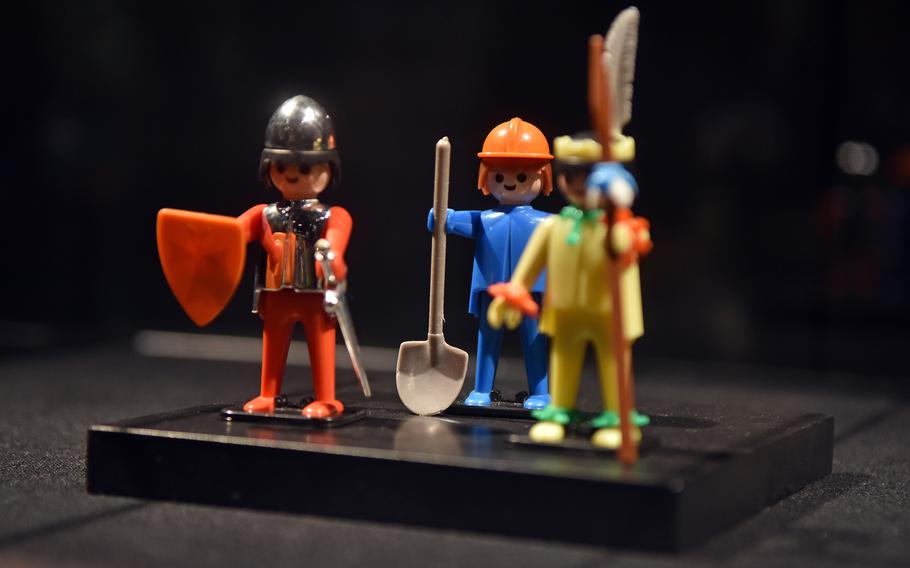
The first Playmobil figures, after the German line of toys was launched in 1974, were a knight, a construction worker and a Native American. An exhibition at the Historical Museum of the Pfalz in Speyer, Germany, celebrating the 50th anniversary of Playmobil is interactive and filled with information about the beloved toys. (Jennifer H. Svan/Stars and Stripes)
It soon after became the highest-selling toy in Germany and over time became a cult classic, like Barbie, Lego and Steiff, according to museum information.
One display shows how Playmobil figures evolved over the years, from those three basic characters to a ghostly wizard in chains from 2000 and on to a white-bearded centaur with wings from 2023. The first “pregnant” figure was marketed in 2012.
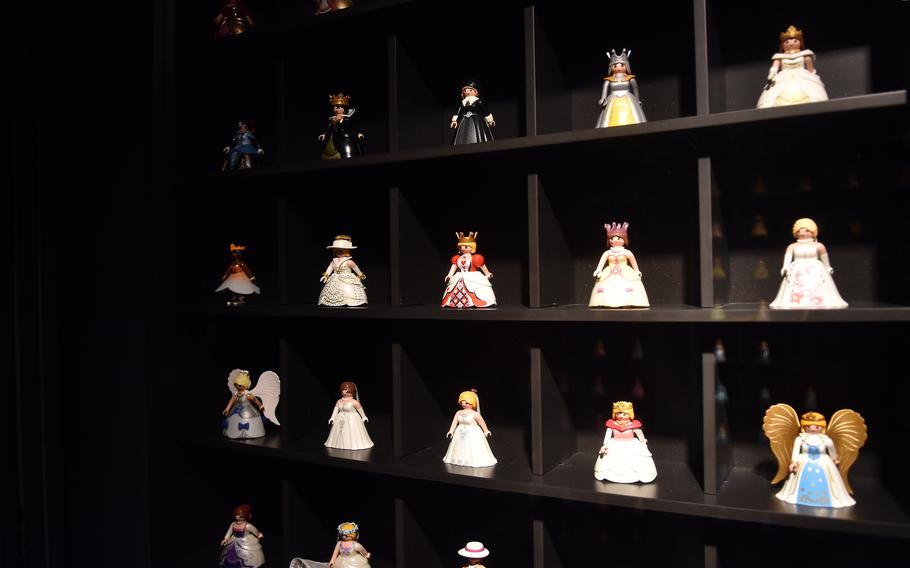
This Playmobil display at the Historical Museum of the Pfalz in Speyer, Germany, includes every figure with a hoop skirt that was ever created for the German line of toys. An interactive exhibition celebrating the 50th anniversary of Playmobil can be seen at the museum through Sept. 15. (Jennifer H. Svan/Stars and Stripes)
Famous people past and present are part of the Playmobil world, too. They include Lady Gaga, Elvis Presley, Joan of Arc, Leonardo da Vinci and Vincent Van Gogh.
You can even take some Playmobil home, courtesy of a small shop set up inside the museum. The exhibition runs through Sept. 15. Public parking spaces are down the street from the museum. Just follow the signs.
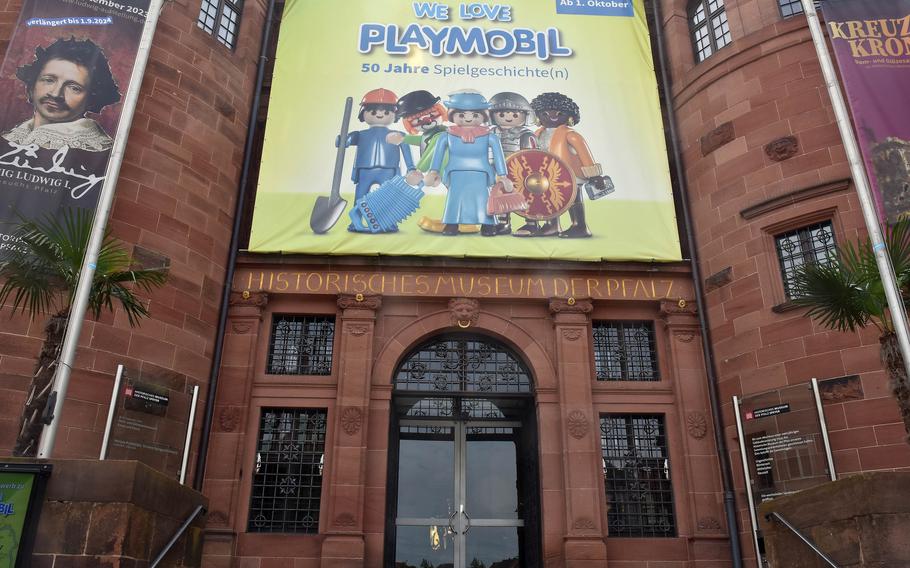
An interactive exhibition at the Historical Museum of the Pfalz in Speyer, Germany, celebrates 50 years of the German toy Playmobil. The “We Love Playmobil” display runs through Sept. 15. (Jennifer H. Svan/Stars and Stripes)
Historical Museum of the Pfalz
Location: Domplatz, Speyer, Germany
Hours: 10 a.m.-6 p.m., Tuesday through Sunday; also open the same hours on Mondays that are public holidays.
Cost: Entrance fees Tuesday through Friday are 15 euros for an adult ticket and 7 euros for children 3 and up and students up to 27 years old; on weekends and holidays, those prices go up to 16 euros and 8 euros, respectively.
Information: museum.speyer.de; info@museum.speyer.de; +49 6232 13 250.